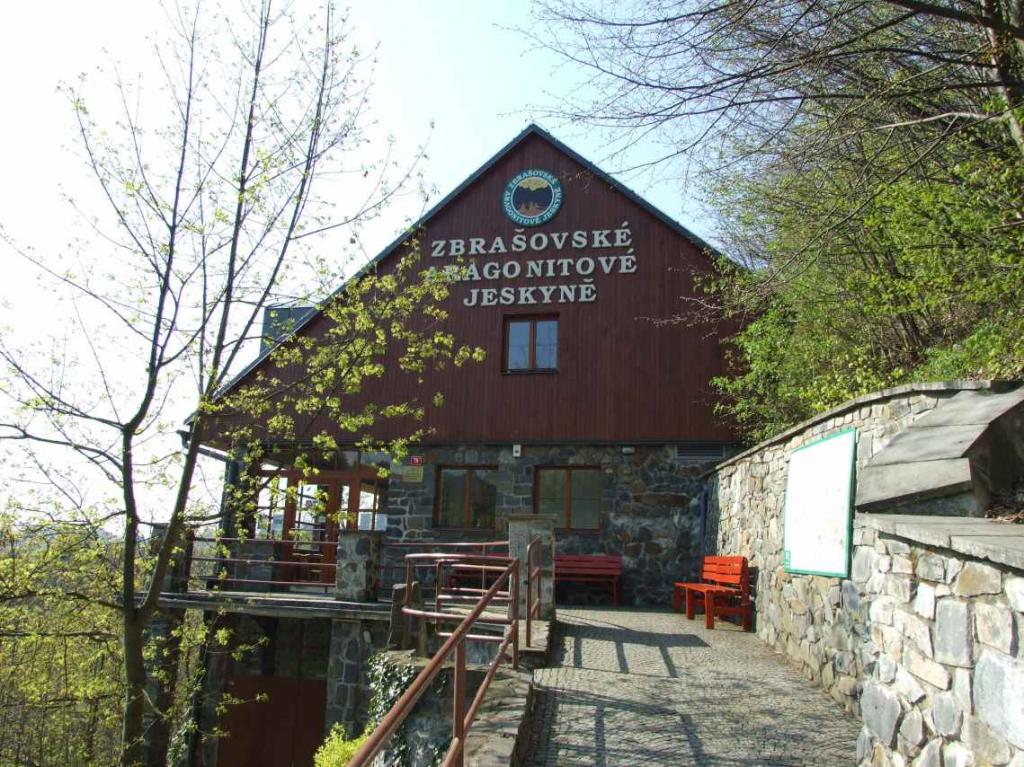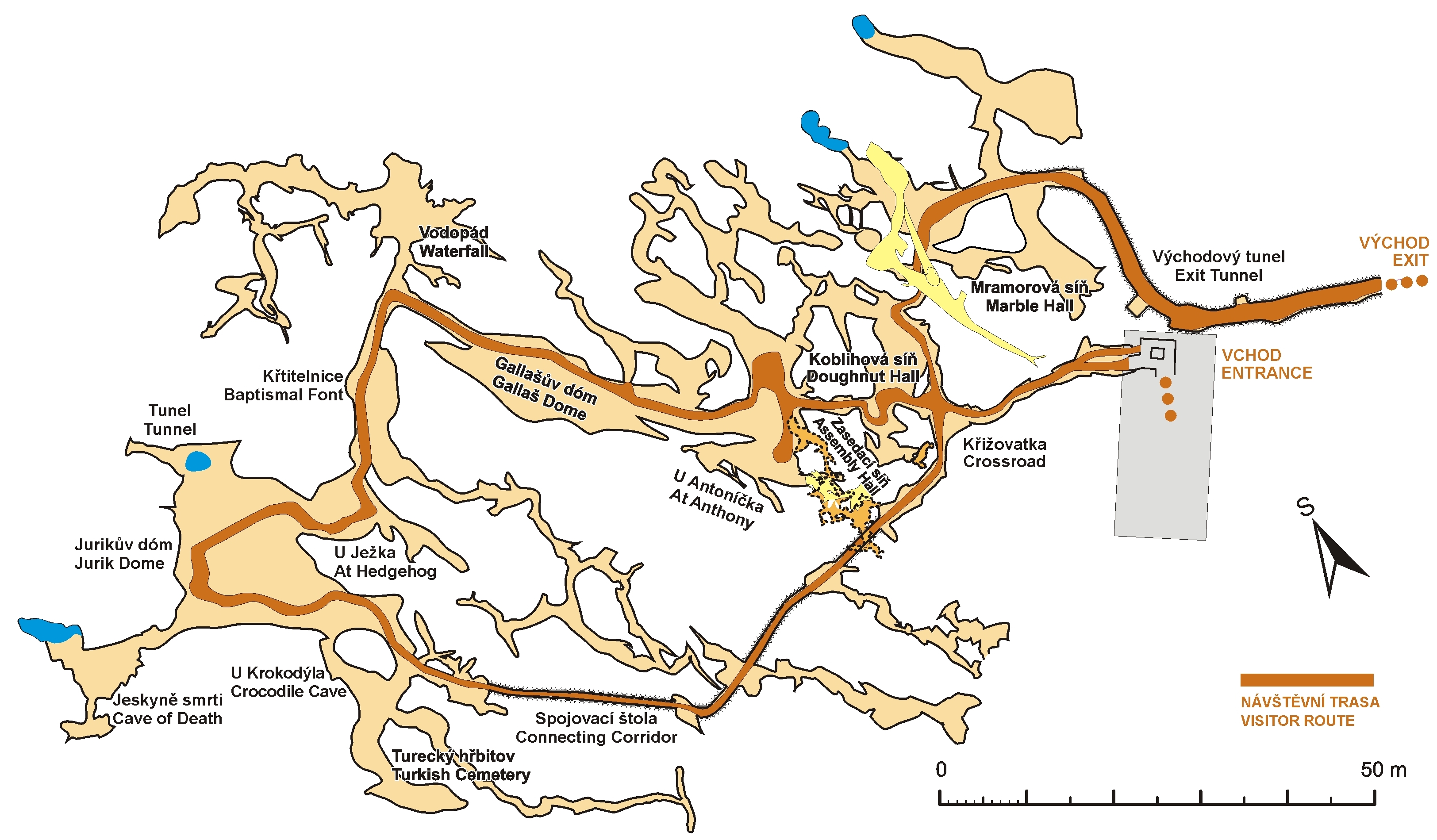Zbrašov Aragonite Caves - visit

Visitors descend to the underground directly from the service building down the stairs through the steep-at-first artificially made tunnel to a depth of about 16 metres. The continuing horizontal passages with special modelling of both the ceiling and side parts unambiguously documents the action of hydrothermal waters and leads to the chasm by a flyover junction of the cave tour. Then you cross the bridge and the route leads you to the first stop in the Assembly Hall, where a remarkable rock block resembles a speaker´s desk. This and the next parts of the caves are already an illustrative exposition of hydrothermal karst.
The Doughnut Hall with a memorial tablet of the discoverer Josef Chromý was named after aureate spherical formations on the walls that really resemble doughnuts. In addition to “doughnuts”, in the part called "At Anthony" you can see another type of hydrothermal decoration – a conical “geyser” stalagmite. The “Anthony” itself is a stone protrusion in the shape of a small person and it is the one formation in the caves that visitors can touch for luck. Beyond the next staircase a view of the first big space the Gallaš Dome opens. It is named after a native of Hranice – the physician, philanthropist and writer Josef Heřman Agapit Gallaš (1756–1840). When entering the dome you can also look into the shaft-like space of the Prokop Chapel.
This cave, as well as the lowest parts of Gallašův dóm, is filled with an invisible “gas lake” with a permanently high concentration of carbon dioxide. Behind Gallašův dóm, at the crossing of corridors called "Waterfall", the walls are decorated with a classic dripstone decoration with sinter coatings and stalactites. Then the labyrinth of passages continues to inaccessible parts of the caves. The cave tour then leads to the Baptistery – an area named after the cavity in the wall created by dripping water. Here, on repositioned “geyser” stalagmites, the original theory of their formation is demonstrated. Water fed through the core of the stalagmite flows out of its top or squirts like a geyser.
It was assumed that stalagmites had been formed by growing of calcite layers just in the places where mineral water flowed out of the supply central channel into the cave space. According to this theory the name of the formations, “geyser stalagmites”, was also introduced into the speleological terminology. However, so far no active geyser stalagmite has been found in the Zbrašov Caves or in any cave in the world. That is why new theories of the formation of these conical stalagmites still arise. They are mentioned in the chapter about stalactite, stalagmite and mineral fillings.
